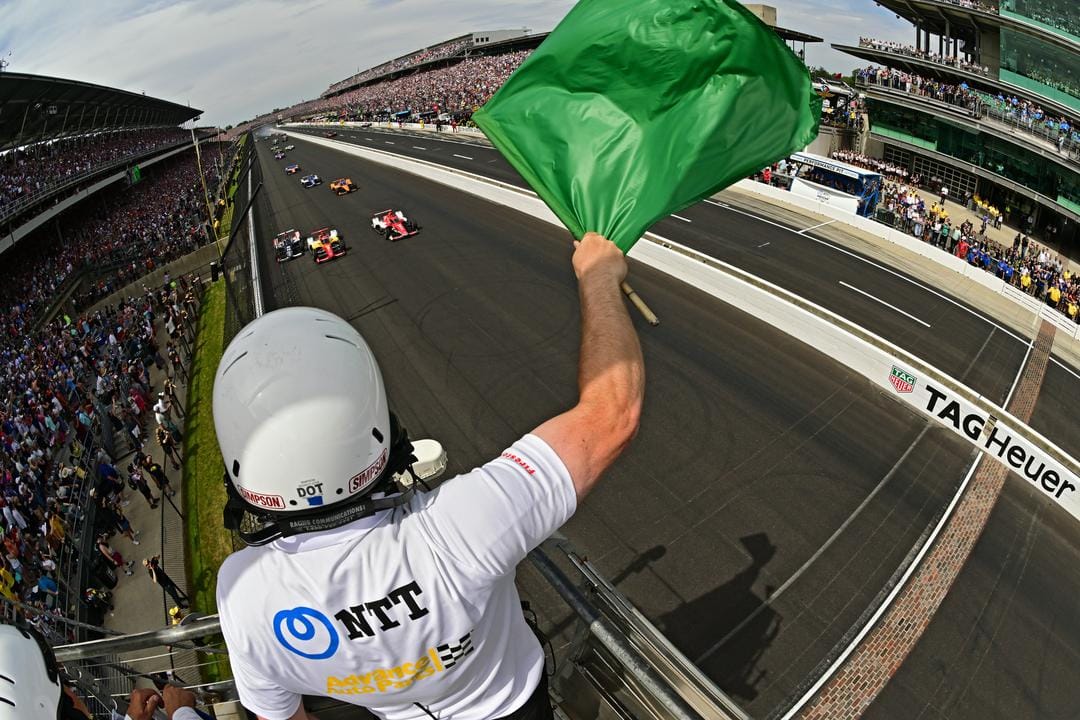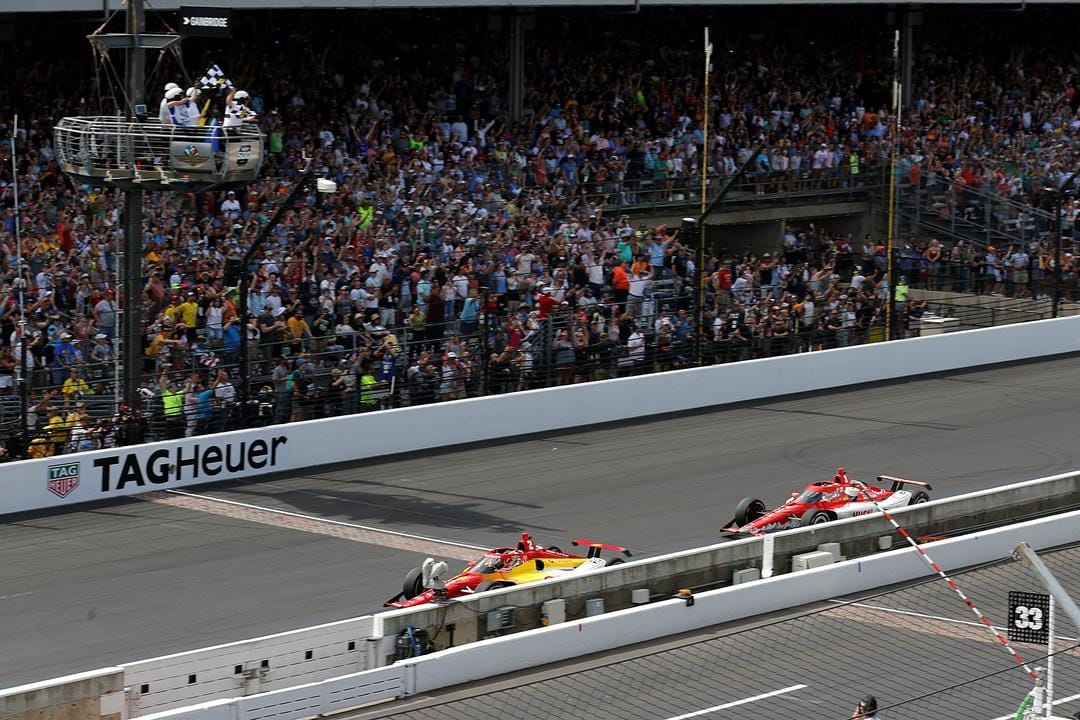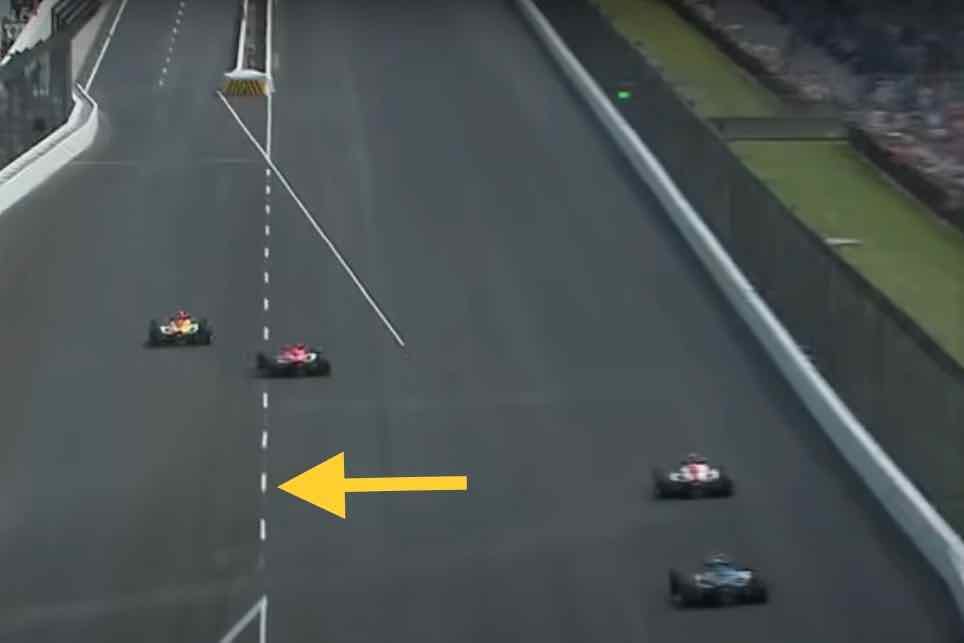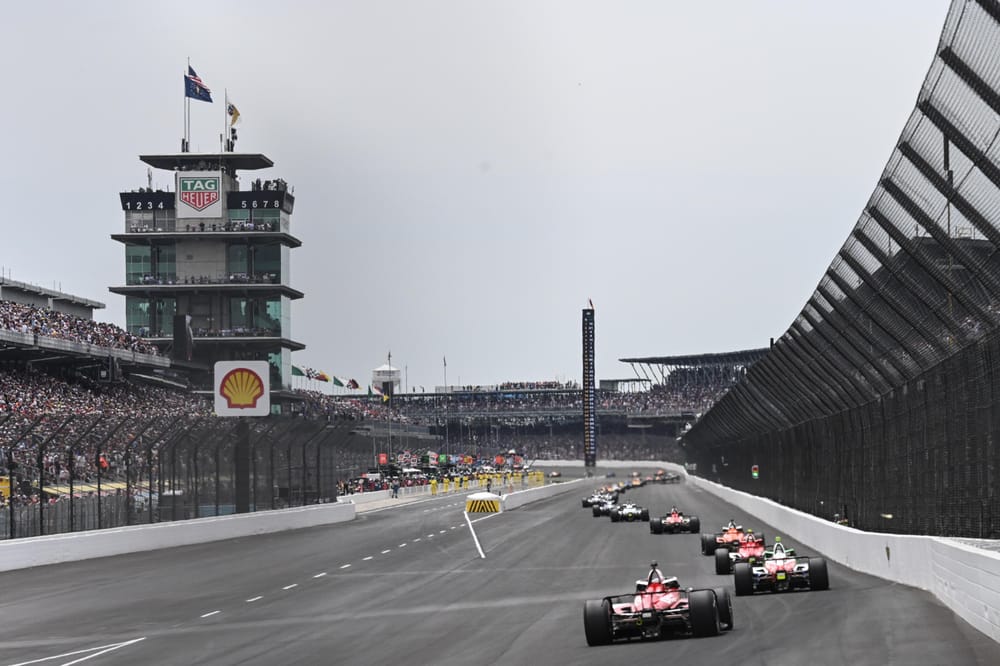The snake. The dragon. The weave. It’s had many names but the controversial move that’s been key to winning recent Indianapolis 500s has been outlawed for 2024.
This move - demonstrated in the video below - is when a driver uses an aggressive weaving motion to break the slipstream to the car behind so it can’t close in. Now IndyCar has a plan to stop it.
Last year’s winner Josef Newgarden reckons the origin of the move dates back to 2015, but it was in 2019 when it was used extremely aggressively by victor Simon Pagenaud that it became a common source of discussion at the Speedway.
The drivers who don’t win and don’t get to use the move regularly criticise it for being dangerous for fairly obvious reasons; that weaving around the track at over 200mph presents a significant case of risk.
The move has been allowed up until now because it hasn’t strictly broken any IndyCar rules. The move is initiated by the lead driver, so it can’t be seen as blocking because the leader is deliberately moving away from the car behind rather than towards it.
There’s also the ‘read between the lines’ issue that, because this move usually decides a race, a penalty would come after the race and that presents a problem for the show. Especially when emotions are high at the end of the 500 and there are so many ceremonies and traditions to uphold.

The move has become more common in this rule set where the car ahead can be a sitting duck for cars attempting to overtake from behind.
Newgarden’s explanation of defending against Marcus Ericsson last year shows that, and suggests he felt reluctant about using the move but was convinced he’d lose the race without it - and knew it wouldn’t be punished.
“I knew immediately when I went into Turn 3 and I saw where Marcus was positioned, he was very tightly tucked behind me, I thought, ‘Man, the opportunity for him to get back behind me before the line was pretty high’,” Newgarden recalled.
“I knew the rules at that point with the line. They weren't policing it. You had to use it.
“The response to change that I think is unanimously liked by everybody. We've all wanted it to change. It's good they're going to be doing that now.
“I don't know that it will change the racing style too much, but it will certainly change that little portion.”

Ericsson isn’t quite as convinced it will change that section of the race.
He used the move to win in 2022, and speaking earlier this week before the details of how the move would be policed had been communicated to the drivers, he said “when it comes down on the last lap, I think all bets are off around this place”.
In terms of how IndyCar intends to police this move, there is a dotted line from the pitwall stretching back towards Turn 4.

Newgarden is the car to the far left executing the dragon/snake/weave move to break the slipstream to Ericsson in behind him.
Under the new rule, any driver crossing that dotted white line with their left-side wheels will be open to a penalty. IndyCar has the choice to issue a drivethrough, a time penalty equating to a drive through if the move is on the last lap of the race, or if it happens under yellow flag conditions, that driver must drop to the back of the restart line-up.
The ban only covers the exit of Turn 4 and the dotted line, where the move is at its most aggressive because a) it’s where the track is widest and b) because on the last lap it’s the last chance for the driver to get a run behind. So we could still see a less aggressive version of the weaving at other places on the track.
And there are dispensations, which are: you can cross the line if you are pitting, if you’re avoiding an incident or if you’re making an obvious attempt to get back on the racetrack if the pitlane is suddenly closed.
Seems simple in practice, and the drivers have been made well aware of these changes.
There’s one more rule change for this year’s event. IndyCar has introduced a restart line this year at other races to try to avoid crashes and aggressive racing further back in the pack on restarts.
That won’t be the case for the 500 - where the traditional rule of being able to race wherever you are on the track once the green flag is waved remains.



